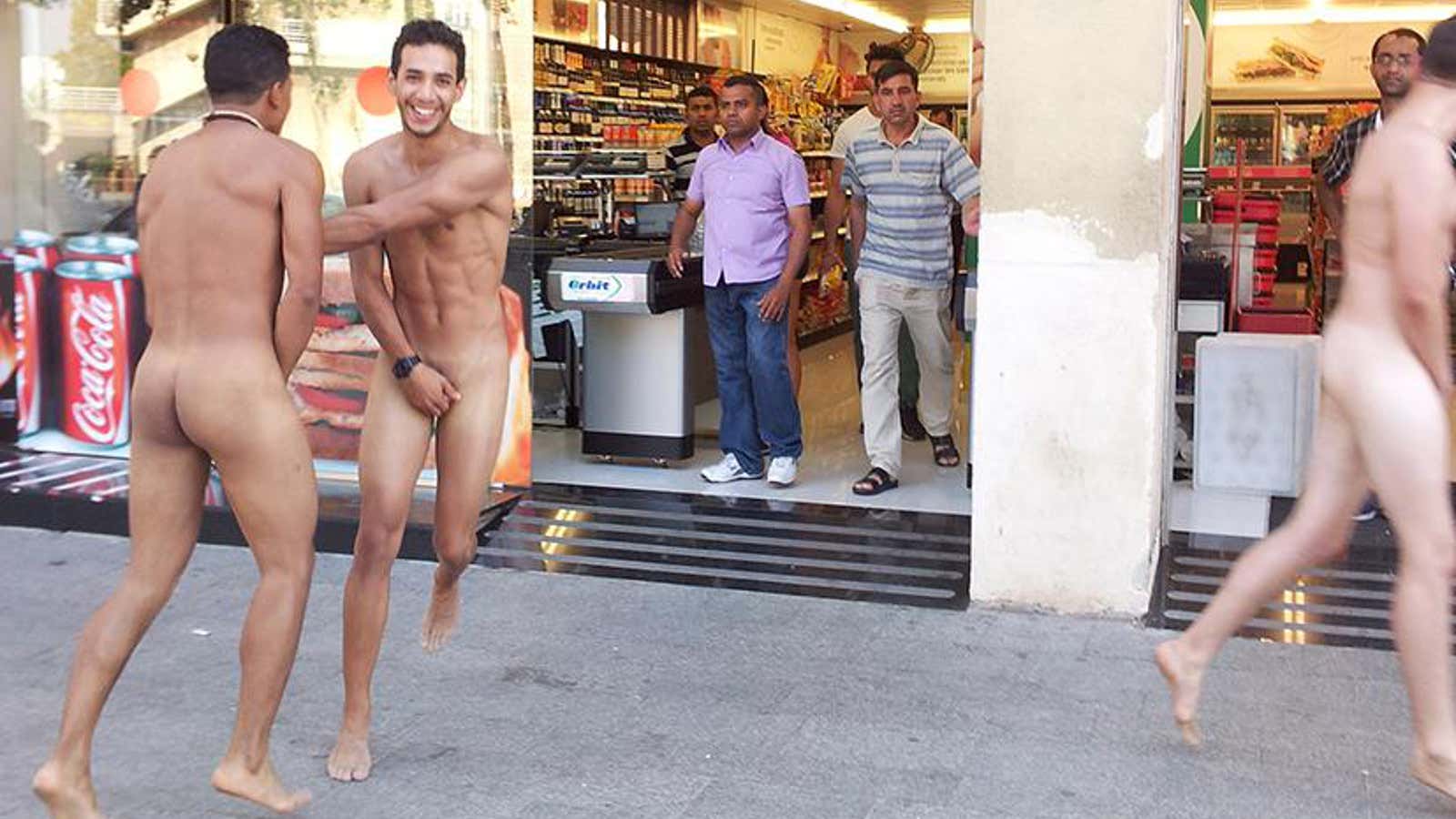Malaysian authorities have released four Western tourists who had been accused of angering sacred spirits and causing a 5.9 earthquake after they posed for a picture naked at Mount Kinabalu, in Borneo. They have been charged a fine of $1,300 and sentenced to three days in prison, which they had already served.
But this will likely not be the last flap over tourists baring it all at sacred sites. As blogs appear that post images of travelers posing naked across the world—Naked at Monuments, for example, or My Naked Trip—some are calling naked travel a new trend.
This movement—distinct from that of people seeking designated nude beaches or naturalist-friendly destinations—made headlines in 2013, when a nude couple ran naked across Machu Picchu before the astonished gaze of a llama.
Since then, at least six more tourists have been detained for posing naked at the Peruvian landmark.
In Cambodia, three French men were deported and two American sisters were detained for taking naked pictures at Angkor Wat temple complex this year. And there have been more reported cases of nude visitors to the site.
Officials from Angkor Wat and Machu Picchu, both Unesco sites, have said that these pictures, mostly starring Westerners in their twenties, are disrespectful and cause anger among locals. ”Perhaps they did not know Angkor is a holy site,” a Cambodian official told AFP. “But their inappropriate activities affect the sanctity of the place.”
It’s a charitable interpretation, but it begs the question of whether these Western tourists are making even the minimal effort to know and respect the cultures they are visiting. (When was the last time you heard of a Cambodian or Peruvian tourist stripping down at the Vatican?)
In Barcelona, a city that receives more than 7 million tourists each year, visitors’ naked cavorting on city streets didn’t profane anything particularly religiously sacred, but it did intrude upon the daily life of the residents of La Barceloneta, who are up in arms against drunk low-cost tourism, and it sparked protests in the popular neighborhood near the shore.
In this selfie-obsessed era, taking a picture of oneself standing in front of a monument doesn’t seem to be enough for some tourists, an op-ed piece in The Guardian about the naked Italians in Barcelona argues.
“The nature of travel has been reversed: the tourist is the sight, the wonder, the monster to behold,” Jonathan Jones wrote. ”It’s as if, in the age of the selfie, no one can stand to be a mere spectator. The centre of the show has to be me, me, me.”
Philip Pearce, a professor of tourism at Queensland’s James Cook University, offered a similar interpretation to the Phnom Penh Post after the Angkor episodes.
“It is a ‘clever’ twist on the theme of achievement and ‘I am/have been here’ statements, by also proclaiming, ‘I am liberated and can break the rules in an exotic place,'” said Pearce, who suggested that ignoring the fad was the best strategy to make it disappear.
Meanwhile, the Canadian traveler and blogger Emil Kaminski, who has defended the trekkers detained in Malaysia in this video, argues that the practice is harmless:
“Why these pictures?” he asks. “They are fun, they are exuberant. It’s just people enjoying the outdoors.”
